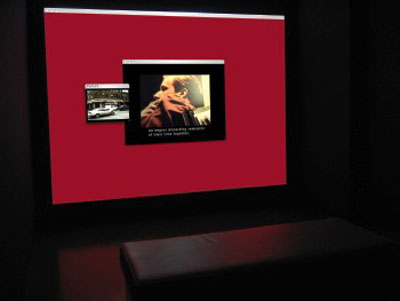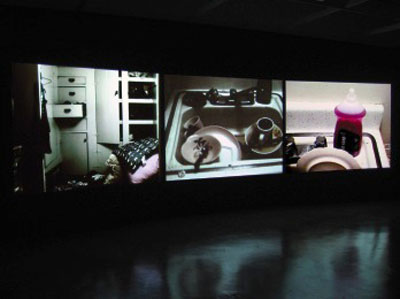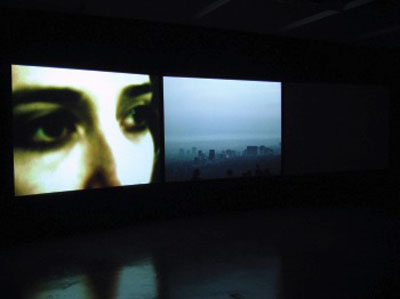
Today we talk with Peter Horvath, who has recently inaugurated a retrospective exhibition at the ACA Gallery of the Savannah College of Art and Design, in Atlanta.
Horvath presents a new DVD-installation, called Boulevard, together with other cinematic DVD’s and Internet-based video. He’s a pioneer of the genre, realizing a bridge between the nouvelle vague, the experimental cinema of the 70′s and the new possibilities of the browser-based cinema, the so-called webcinema.

LUCA: In this solo exhibition, you will present your new piece “Boulevard”, what is it about?
HORVATH: Boulevard is a 3 channel video installation. It follows two enigmatic, nameless people through their nighttime rendezvous, their drives through California canyons, their secrets, their confessions. I wanted to create a kind of intimate theatre, accessible from the web browser, a dreamlike odyssey that examines multiple states of consciousness within a shadow of family histories.
Filmed in Los Angeles, mostly at night and in the Laurel Canyon/Hollywood Blvd area close to Mullholland Drive, it’s the first work I’ve done that is made for both the web and an installation situation, constructed so that once finished for the web it could be re-constructed into 3 separate DVD’s that are projected simultaneously.
LUCA: What are the influences of the web to cinema, and how has cinema mutated migrating on a network?
HORVATH: I’ve always been interested in fragmenting my narratives, and I’ve done so in past work by having multiple windows open and close within the web-browser environment, playing out various parts of the story. Boulevard is slightly different from past work in that there are no pop-up windows, and instead I’ve divided the screenspace into 3 panels of video. In the web version there are randomly placed texts that appear below the videos that tell a different part of the narrative, fragmenting things further.

LUCA: I think webcinema, particularly, is an individual experience, like cinema; how did you manage to install your webcinema pieces in an open space?
HORVATH: I try to create intimate spaces to project the works large scale, but of course the intimacy is different compared to the one on one we have when interacting with the computer. With the ACA show, we constructed 4 rooms, 1 for each work.
LUCA: Talking about cinema, who are your favourite contemporary authors?
HORVATH: Krzysztof Kieslowski, Scorsese, Truffault (can he be considered contemporary?) but my influences lean more toward artists than filmmakers; Bill Viola, Barbara Kruger, Jenny Holzer, Francis Bacon and the Dadaist Hannah Hoch to name a few.

Socialize